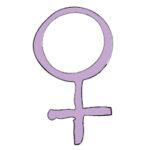 Thank you for your question. The cut is likely due to a tear caused by your partner’s fingernail. This type of injury is common with sexual activity such as with the insertion of a finger, penis or other object and also sometimes with the removal of pubic hair. Some women who have vaginal dryness, certain skin conditions and others who are taking steroid medicine, are more prone to vaginal tears and cuts. Typically, the bleeding stops quickly, but the cut can take a few days to a week to heal completely. While it is healing, it can burn if your urine comes in contact with the cut, and the area can also be sensitive while bathing. While your vaginal cut is healing, pour warm water (not hot) over your vaginal opening while you pee to dilute the urine and drink lots of water to make your urine less acidic. These actions will decrease the burning sensation. Do not place anything in your vagina until the cut has completely healed. If you notice any unusual discharge, odor or bleeding (and you are not on your period), make an appointment with your health care provider. Sometimes a vaginal cut can lead to an infection. If this happens, you’ll need treatment such as antibiotics or vaginal medication. Just one more important bit of advice: you never ever have to participate in any kind of sexual activity that you are not comfortable with or that doesn’t feel good. “Just say NO.” If you ever feel threatened or scared, reach out to a trusted adult such as a parent, close relative or your health care provider.
Thank you for your question. The cut is likely due to a tear caused by your partner’s fingernail. This type of injury is common with sexual activity such as with the insertion of a finger, penis or other object and also sometimes with the removal of pubic hair. Some women who have vaginal dryness, certain skin conditions and others who are taking steroid medicine, are more prone to vaginal tears and cuts. Typically, the bleeding stops quickly, but the cut can take a few days to a week to heal completely. While it is healing, it can burn if your urine comes in contact with the cut, and the area can also be sensitive while bathing. While your vaginal cut is healing, pour warm water (not hot) over your vaginal opening while you pee to dilute the urine and drink lots of water to make your urine less acidic. These actions will decrease the burning sensation. Do not place anything in your vagina until the cut has completely healed. If you notice any unusual discharge, odor or bleeding (and you are not on your period), make an appointment with your health care provider. Sometimes a vaginal cut can lead to an infection. If this happens, you’ll need treatment such as antibiotics or vaginal medication. Just one more important bit of advice: you never ever have to participate in any kind of sexual activity that you are not comfortable with or that doesn’t feel good. “Just say NO.” If you ever feel threatened or scared, reach out to a trusted adult such as a parent, close relative or your health care provider.
Our health guides are developed through a systematic, rigorous process to ensure accuracy, reliability, and trustworthiness. Written and reviewed by experienced healthcare clinicians from Boston Children's Hospital, a Harvard Medical School teaching hospital and consistently ranked as a top hospital by Newsweek and U.S. News & World Report, these guides combine clinical expertise, specialized knowledge, and evidence-based medicine. We also incorporate research and best practices from authoritative sources such as the CDC, NIH, PubMed, top medical journals, and UpToDate.com. Clinical specialists and subject matter experts review and edit each guide, reinforcing our commitment to high-quality, factual, scientifically accurate health information for young people.